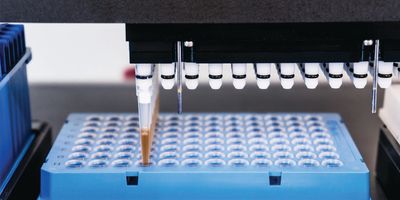Evaluating Automated Liquid Handling Solutions
Liquid handling systems should be adaptable to future needs and their maintenance should be transparent and straightforward
A liquid handling system is often the centerpiece of laboratory automation. This can be the case for drug discovery and validation in big pharma companies, infectious disease detection in clinical labs, fulfillment of chemical screening and next-generation sequencing (NGS) workflows in university core facilities, and big-data-driven experiments requiring many samples and replicates in individual research laboratories. Although vastly different environments with disparate concerns and goals, the through-line is that delegation of a subset of laboratory tasks to a robotic platform imparts both efficiency and reproducibility not achievable by human hands.
For instance, think about yourself or your laboratory personnel performing comparatively menial tasks such as nucleic acid extraction and purification. Often, optimizing these workflows dictates coordinating sample numbers with the capacity of a laboratory centrifuge. As you have discovered the hard way, the time to complete a round of extraction builds exponentially rather than linearly when you have 24 or 48 samples to wash, aspirate, and spin down repeatedly. Additionally, the magnified possibility of a single labeling or transfer error extending throughout the whole procedure can be exceedingly difficult to track backward and identify.
An unidentified manual error can have a catastrophic impact on budget, time, and overall project success.
Now, think about designing and executing large-scale experiments to generate complicated data sets, using precious reagents such as antibodies or recombinant proteins. An unidentified manual error can have a catastrophic impact on budget, time, and overall project success. Moreover, large data sets intrinsically require extra technical and biological replicates to reach increasingly stringent statistical significance thresholds. Automating liquid movement for repetitive steps exerts fine control over volumes, error-free distribution across hundreds of samples, and minimizes reagent waste. Most importantly, however, liquid handling systems can miniaturize reactions beyond what we can physically accomplish, including reproducibly filling 1,536-well plates in sub-microliter volumes.
This advance has been indispensable to the modern era of biomedical science, and liquid handling systems can now be scaled from industrial high-throughput chemical and antibody screening (HTS) or protein structural characterization platforms, down to benchtop decks capable of integrating complete or partial automation into everyday laboratory workflows, such as NGS library prep, qPCR setup, and comparatively simple reformatting of liquid reservoirs into microwell plates.
The first reflexive concerns when considering purchase of a liquid handler will be money and space. Given your current and projected budget, what is the timeframe for a return on investment for the instrument and its appendages? Can you physically fit everything into your workflows for the next several years, while accounting for both the instrument’s direct footprint and the negative space around it to ensure freedom of movement and user safety?
The first key to being able to answer these questions is to begin a relationship with a product vendor representative who can develop a thorough understanding of your current and future project needs. A vendor should be able to predict the size and extent of instrumentation based on the numbers and types of samples you need to process, compatible external devices you will need, and how the system should be adaptable to evolve with future needs. For instance, if you need to add an entirely new assay or workflow in six months, how straightforward is that, and does your service plan cover the new customization?
The first reflexive concerns when considering purchase of a liquid handler will be money and space.
The vendor should be ready with specifications beyond footprint and power consumption. These can include whether a handler’s coefficient of variation is adequately small across a range of volumes to accommodate your workflow requirements; what assays, kits, and reagents are compatible and/or validated with the instrument and how they dictate management of quality and regulatory compliance; and the void or dead volumes created by automation that need to be discarded and how that translates (or doesn’t) into quantifiable long-term savings. Finally, the vendor should be able to provide a menu of service contracts tailored to your customized setup, and give real-world estimates of expected downtimes during maintenance.
Once you have established this important relationship, there are many more follow-up questions to ask, some of which are listed below:
• Because the liquid handling robot will last a long time, to what extent will its adaptability to (1) integrate attachments, including those that may not yet be available, and/or are from market competitors, and (2) build capability upon itself via modular scaling and customization, impact your future planned experimental workflows?
• What safety and security features are included in the instrument design, and in the specific custom package, both in terms of data storage and auditing, and user safety via robot haptics and movement detection?
• How intuitive and user-friendly is the system, from the liquid handling robot itself to the deck layout, and by extension how easy is it to change volumes, sample numbers, and the spatial outlay of samples within their destination plates and wells?
• To extend the theme of user-friendliness:
- How straightforward is user training on hardware and software, from the standpoint of programming at the front end, and analysis at the back end?
- What specific elements in the available software packages drive user-friendliness? For instance, does it run analogously to MS Office apps, with copy, paste, and save functions? If needed or desired, can the user override the robot controls and command a mouse and keyboard? And finally, are the Help pages actually helpful?
If you are satisfied with your client-vendor relationship, can answer these questions, and confidently foresee your future uses and needs, then you are probably ready to purchase a liquid handling system and step into a new world of automated consistency and reliability.

